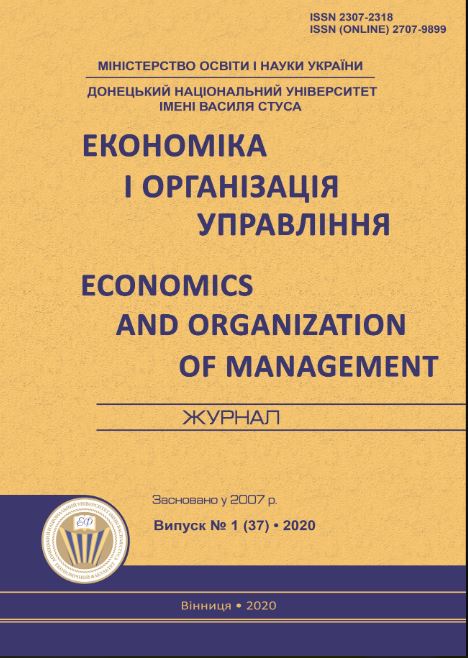Characteristics of financial cycles: world experience and Ukraine.
DOI:
https://doi.org/10.31558/2307-2318.2020.1.2Keywords:
financial cycle, economic cycle, financial integration, real house prices, foreign direct investment, loans, volatility indexAbstract
The analysis of financial cycle indicators for developed and developing countries is carried out. They were compared to those of Ukraine. The analysis of the dynamics of relevant indicators revealed the characteristic tendencies of manifestation the financial cyclical at the present stage. The correlation between the aggregate indicators of two groups of countries and Ukraine is investigated.
The tendencies of local financial cycles to joint movement and the mutual nature of cyclicality are analyzed, the reason of it is the financial integration and globalization processes. Comparison of the amplitude of the fluctuations of the global and local financial cycles has shown a growing level of interdependence. The regularities of the impact of changes in the global financial cycle on the local are determined and the level of sensitivity of financial cycles of individual groups of countries to cyclical shifts of each other is estimated.
References
Drehmann, M., C. Borio, and K. Tsatsaronis. “Characterising the Financial Cycle: Don’t Lose Sight of the Medium Term!” BIS Working Paper. 2012. No. 380 (June).
Christiano L., and T. Fitzgerald. “The Band Pass Filter.” International Economic Review. 2003. № 44 (2). P. 435-465.
Rey, H. “Dilemma not Trilemma: The Global Financial Cycle and Monetary Policy Independence”. NBER Working Paper. May 2015. No 21162. P. 285-333.
Gorton, G., and G. Ordonez. “Good Booms, Bad Booms.” NBER Working Paper. 2016. No. 22008.
Giordani, P., Spector, E., Zhang, X. (2017). A New Early Warning Indicator of Financial Fragility in Sweden. Sveriges Riksbank. Economic Commentaries. 19 January 2017. № 1.
Jordà, Ò., M. Schularick, A. Taylor and F. Ward. “Global financial cycles and risk premiums”. NBER Working Papers. 2018. no 24677, June.
Real GDP growth. IMF. URL: https://www.imf.org/external/datamapper/NGDP_RPCH@WEO/OEMDC/ADVEC/WEOWORLD (дата звернення: 23.01.2020).
Total Credit to Private Non-Financial Sector. Bank for International Settlements. URL: https://fred.stlouisfed.org/series/Q5RPAM799A (дата звернення: 23.01.2020).
Real Residential Property Prices. Bank for International Settlements. URL: https://fred.stlouisfed.org/series/Q4TR628BIS (дата звернення: 23.01.2020).
Passari, E. and Rey, H., “Financial Flows and the International Monetary System”. Economic Journal. May 2015. Vol. 125. № 584. Р. 675‑698.
Foreign direct investment, net inflows and outflows (% of GDP). World Bank. URL: https://data.worldbank.org/indicator/BX.KLT.DINV.WD.GD.ZS (дата звернення: 23.01.2020).
CBOE Volatility Index: VIX - Historical Annual Data. Macrotrends. URL: https://www.macrotrends.net/2603/vix-volatility-index-historical-chart (дата звернення: 23.01.2020).
Статистична інформація. Державна служба статистики України. URL: https://ukrstat.org › operativ › oper_new (дата звернення: 23.01.2020).
Грошово-кредитна статистика. Національний банк України. URL: https://bank.gov.ua/statistic/sector-financial/data-sector-financial (дата звернення: 23.01.2020).
Nonfinancial corporate debt, loans and debt securities. International Monetary Fund. URL: https://www.imf.org/external/datamapper/NFC_LS@GDD/CHN (дата звернення: 23.01.2020).
Domestic credit to private sector (% of GDP). World Bank. URL: https://data.worldbank.org/indicator/FS.AST.PRVT.GD.ZS (дата звернення: 23.01.2020).
Gross capital formation (% of GDP). World Bank. URL: https://data.worldbank.org/indicator/NE.GDI.TOTL.ZS (дата звернення: 23.01.2020).

